Spelling Strategies That Follow Science of Reading + FREE Guide
This post may contain affiliate links, and I will earn a commission if you purchase through these links. Please read the disclosure policy for more details.
If you’re looking for spelling strategies to help struggling learners then keep reading. In this post, I share my favorite effective multisensory spelling strategies that help with any kind of spelling list.
These spelling strategies have been very successful with struggling learners because they integrate multiple senses and provide several options for the information to be processed. They are based on the science of reading and have been proven to be the most effective methods for teaching spelling.
Effective Spelling Instruction
Effective spelling instruction should include:
- Alphabetic principle – knowing that letters represent sounds and are read from left to right
- Pattern information – knowing word patterns such as CVC, CVCe, CVVC, etc. and how they represent sounds
- Spelling variations based on word origins – for example, /k/ is spelled with a ch in words of Greek origin like chaos
- Meaning information (morphology) – which groups of letters represent meanings, such as prefixes and Greek and Latin roots.
Most English words follow patterns and spelling rules or generalizations, and only about 10% are truly exceptional and must be memorized. Therefore, we must focus on incorporating these 4 areas of effective spelling instruction to prevent that widespread and incorrect idea that “English doesn’t make sense”. Because 90% of the time, it does.
The problem with traditional spelling lists
But first I want to mention a problem that many children face with traditional spelling lists. The best way for struggling readers and spellers to learn new words is by isolating spelling patterns. This means that the whole spelling list should only contain one spelling pattern for a particular sound.
Say for example the class is working on vowel teams with the long a sound. The long a sound can be spelled as ai, ay, ei, and sometimes ea. Most spelling lists will include a mix of words with these different spelling patterns, or they may even mix different sounds like long a and long e. This causes lots of confusion and frustration for struggling learners, especially students with dyslexia.
Isolate Spelling Patterns
The better way to do this for struggling learners is to only include one spelling pattern in the list. This helps the students isolate the pattern and get enough exposure to create the visual memory of the sound.
Remember that children who struggle in reading and spelling have a hard time associating the correct letters to sounds, so developing their sound-symbol imagery is critical. Giving them different spelling patterns only confuses them. Before they work with several spelling patterns together, they need to master them in isolation. Of all the spelling strategies out there, isolating spelling patterns is probably the most effective for students who really struggle with spelling.
Phonogram cards are a great tool to use to help isolate spelling patterns. Phonograms are are just the spelling of a sound, such as ch for /ch/ and c for /k/. These cards only display one spelling pattern for a sound, as the focus is on the spelling of that sound.
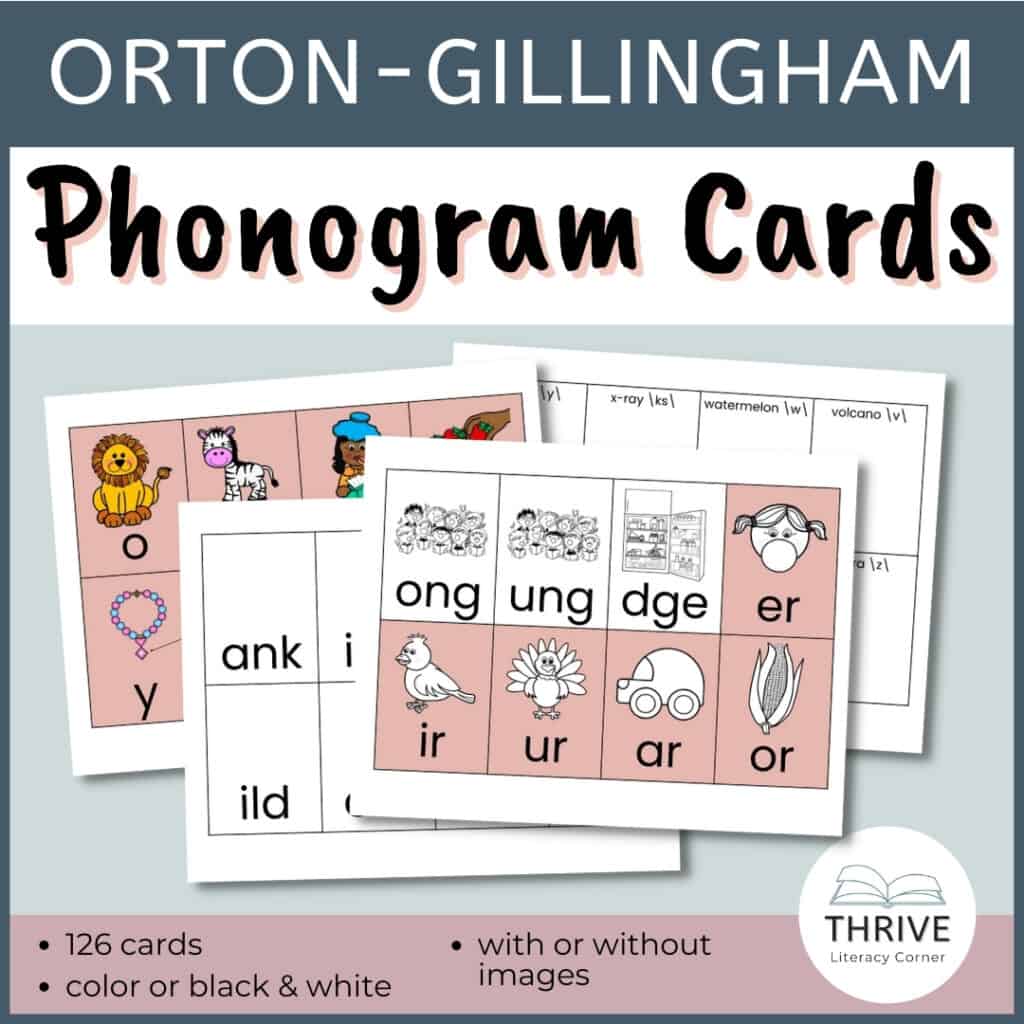
Effective Spelling Strategies
The following spelling strategies have been shown to improve students’ spelling skills. It helps to use phonics based spelling lists, but even if you don’t, you can apply most of these strategies.
Color code spelling patterns in mixed lists
If you don’t have control over the spelling list, then this tip can really help. I often use this as a dyslexia intervention with my students since their spelling lists are all over the place.
Teach students to group and color code the different spelling patterns in the list.
This is a great dyslexia spelling strategy. Identify a few patterns in the list and pick a color for each one. Then write the words in the chosen color in different groups. This gives students a visual cue they can use when spelling the word. They will associate the spelling pattern with a color so that when they are asked to spell the word, they will be able to recall the color that word was in, and thus identify the spelling pattern for that color. That is the sound-symbol imagery they need.
Remember to refer to the spelling rule for each pattern after color-coding them. This way it is easier for them to see it. For example, the spelling pattern usually ai goes in the middle of a word. But if you have all the different patterns mixed in the list, they cannot see that as easily as you can. Once you isolate the words by color coding the list and grouping them together, they can see that spelling rule and understand how to apply it.
Here is an example spelling list:
- Bake
- Train
- Main
- Break
- Pray
- Clay
- Brain
- Grain
- Play
- Mane
- plane
- Sway
Pattern groups:
Bake, plane, mane
Pray, clay, play, sway
Train, main, brain, grain
Break
You would write each group in a different color as shown in the picture below.

If you can incorporate explicitly teaching spelling rules then try as this is the best way to remediate spelling difficulties. I highly recommend this book to help guide you. Even parents can read it and look for multisensory ways to then teach the spelling rules.
Simultaneous Oral Spelling
This is a 6 step multisensory strategy that helps build phonological awareness. When using the SOS method, students listen to the word, repeat it, perform a few quick steps to spell the word, and finally write the word. You can read more about it in this post: Simultaneous Oral Spelling Multisensory Spelling Strategy
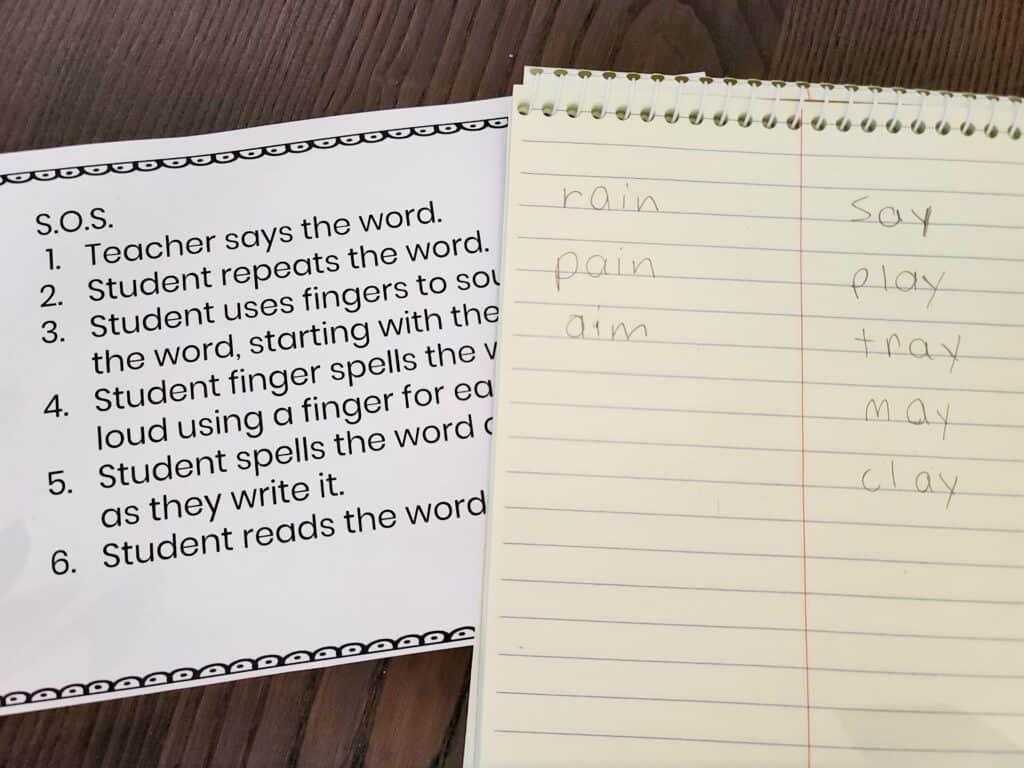
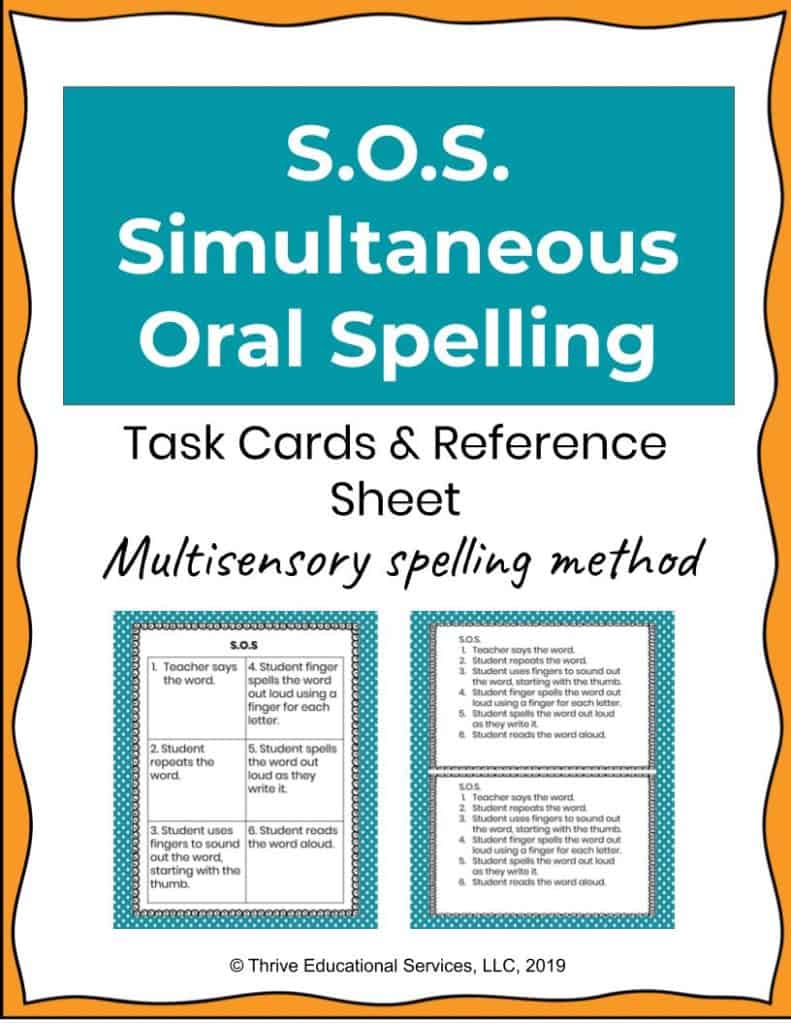
Phoneme Grapheme Mapping
Phoneme awareness is critical to developing spelling skills. If students cannot hear each individual sound in a word then they can’t spell the word.
Phoneme grapheme mapping activities match letters (graphemes) to their sounds (phonemes). Students must split words into their phonemes then spell each phoneme, which is exactly what you want to focus on in spelling. By working on this, students develop phoneme awareness and in turn, their spelling and reading improve.
Read more about phoneme grapheme mapping in Phoneme Grapheme Mapping Activities That Develop Orthographic Mapping, and check out my word mapping template below to get started with phoneme grapheme mapping today.
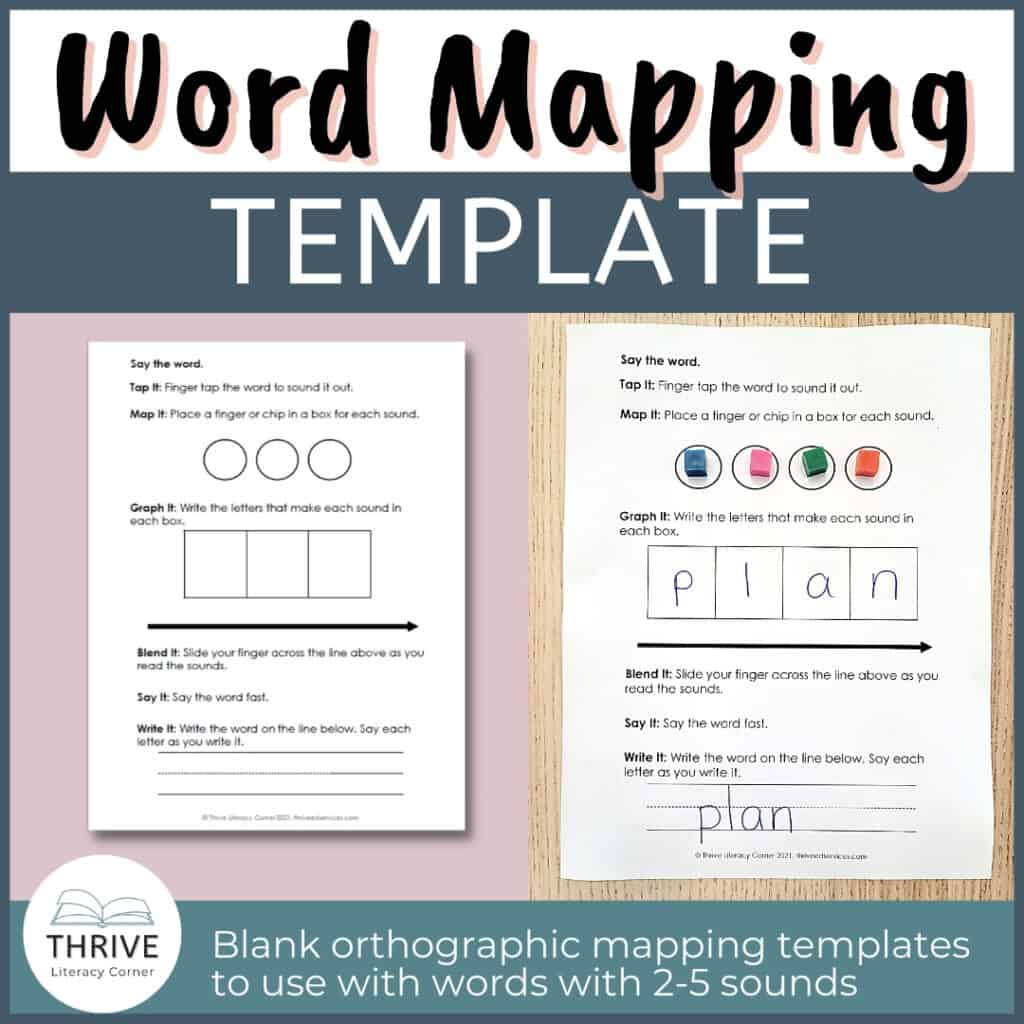
Teach spelling generalizations and rules
There are quite a few spelling generalizations and rules, but learning these helps students become better spellers. Take a look at the graphic below showing some spelling patterns for long a.
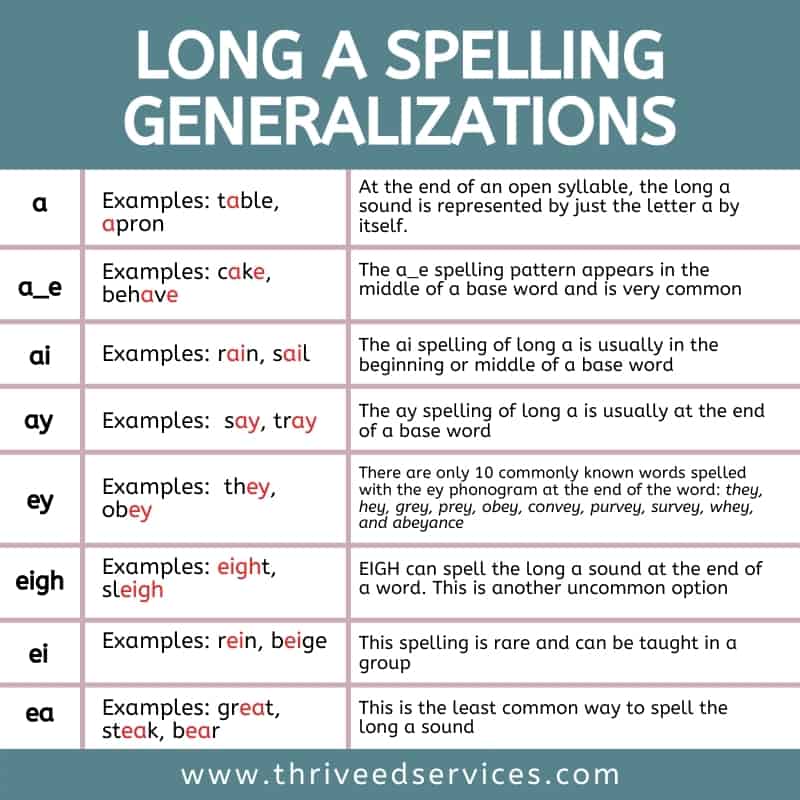
This is an area where word origin is helpful, as many words are spelled a certain way based on where they came from.
Check out these resources to help you teach spelling generalizations:
I compiled all the long vowel spelling generalizations in this set: Spelling Generalizations Charts for Long Vowels.

Teach word patterns and syllables
Word patterns such as CVC, CVCe, CVVC, etc., and the 6 syllable types help students know how to spell words.
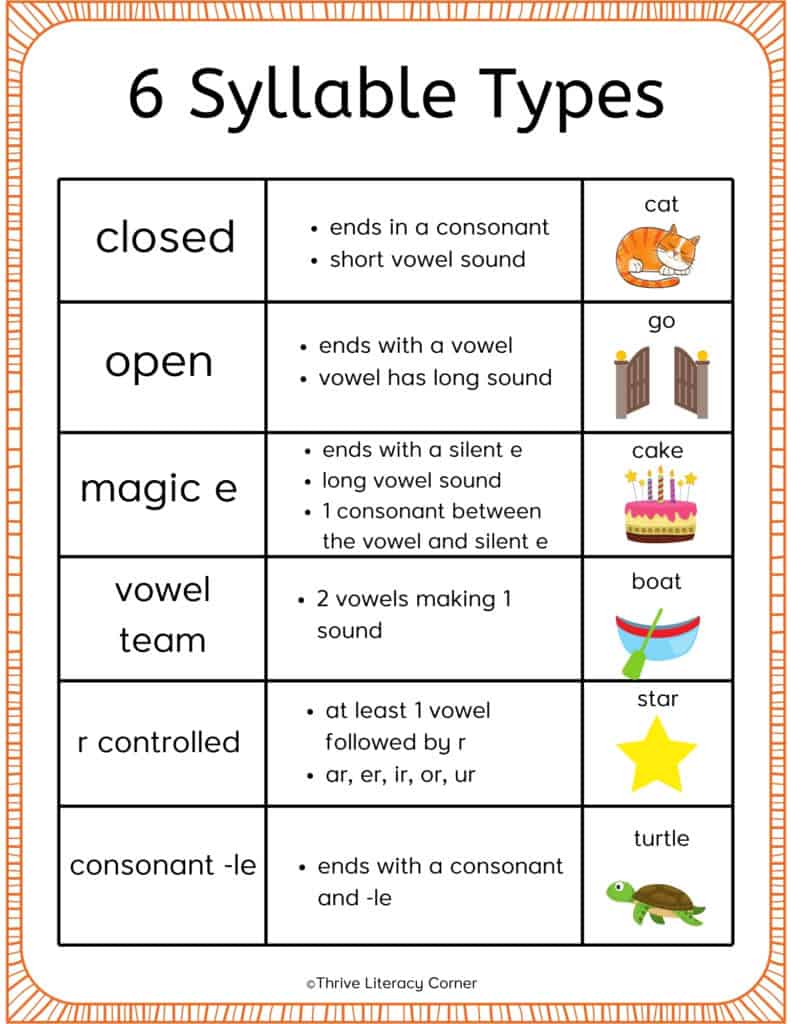
Check out the resources below for more on teaching patterns and syllables:
Teach morphology
Instruction in affixes and roots is especially helpful in upper elementary as students will come across more words with these groups of letters.
Teach the exceptions
There are always exceptions, and you should take the opportunities to teach them.
Oftentimes, exceptions are due to word origin in which a little etymology lesson can be fun. I find my students really appreciate it when I explain why a word is an exception. And they always find the history of the word interesting.
Phonogram Drills
Use phonogram cards with the spelling patterns you’re working on along with some you have taught previously to do phonogram drills. These are really quick and easy and really help students.
To do a phonogram drill, simply hold up a phonogram card and ask students to say the sound and keyword and spell the sound. Then flip to the next card and repeat until you’ve gone through all your cards.
For example, look at the card below for the phonogram /ew/. The keyword is chew, which the picture helps remind students. Students would look at this card, say the sound /ew/, spell the sound aloud, and say the word ‘chew’.
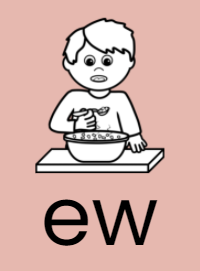
Dictation
After you have worked on a specific spelling pattern, do a dictation activity with sounds, a few words, and a few sentences. I always use the new sounds and words I taught along with some review, so students don’t forget.
Below I was reviewing some long vowel phonograms, but I also threw in /sh/, /b/, and /k/. For the sounds section, I say “write all the ways to say /k/” for example, and students should write all the phonograms they know for that sound. Then for words I say the word once, say it in a sentence, and repeat the word one more time. I use both new and review spelling words. For sentences, I say the sentence one time only, not too fast or slow, and I try to include spelling words, high frequency words, and anything that needs to be reviewed. You can download this dictation worksheet in my freebies library.
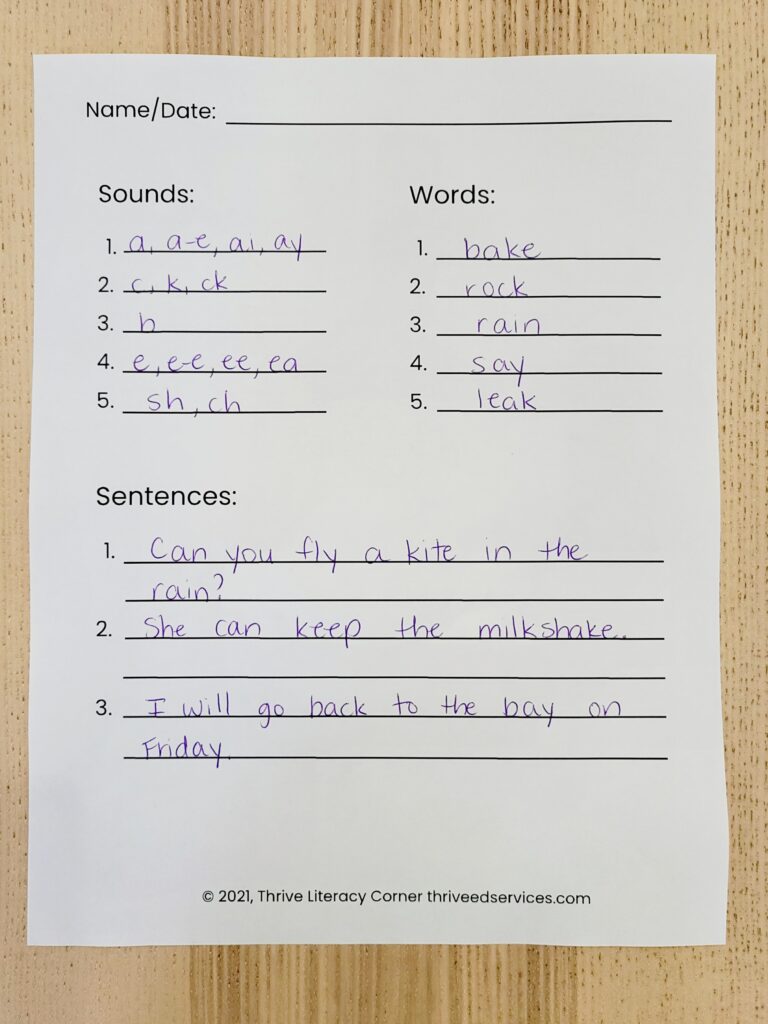
Sight Words
For sight words, I use 3 strategies.
The first is the Heart Word Method. This method incorporates a few strategies to help students map the words out and remember them more effectively than traditional spelling activities like repeated writing and ABC order. Essentially, you decode the decodable parts of the word and remember the tricky part by heart. Check out my resource for heart words below, or read the blog post for more info on this method.

The second is using as many multisensory strategies to spell a word as I can. Options include tapping out the letters in the word, air writing, salt tray spelling, magnetic letters, and writing the word in a variety of ways. Then use the word in a sentence to give it some context. Do all of these with the word shown to the student. After writing the word several times and using it in a sentence, remove the image of the word and have the student write it from memory.
The last strategy is creating a picture association. I discuss a possible image that can help the student remember the word. One example is drawing eyes on the “oo” in the word look. Picture association is really helpful for dyslexic students.
Use Nonsense Words
The best way to test if students really know the spelling pattern is to give them nonsense words and see if they can spell them correctly on their own.
For example, after working on long a words, you would ask them to spell the nonsense word dray. They should know for the long a sound to be at the end of the word it has to be spelled as ay. Just come up with nonsense words that would follow the spelling rules in the list. Once they can do that without help, they have mastered that spelling rule.
These spelling word activities ensure students are not only memorizing but really learning how to apply a spelling rule.
Spelling Word Activities
Along with the activities mentioned above as effective spelling instruction, below are some effective spelling word activities for students to practice their spelling words.
- Word sorts
- Sentence writing using spelling words
- Games that use words, such as crosswords, puzzles, etc.
- Cloze passages
- Word Mapping Centers
Bottom Line
Moving away from thematic spelling lists that rely heavily on memory to phonics based systematic lists is key to effectively teach spelling. But if you can’t, using these effective spelling strategies will go a long way in helping your students become better spellers.
Sources:
- Reading Rockets: Spelling
- Structured Literacy Interventions: Teaching Students with Reading Difficulties, Grades K-6
- Uncovering the Lofic of English by Denise Eide
- Equipped for Reading Success by David Kilpatrick
Check out some other products in my shop!
If you’re looking for more tips on teaching reading to struggling learners, check out these other posts:
- My Secret Tip to Improve Reading Comprehension
- Reading Strategies for Struggling Readers – Elkonin Boxes
- Multisensory Strategies for B & D Reversals
- Systematic Synthetic Phonics for Struggling Readers
- How to Implement Multisensory Learning
- Phonemic Awareness Strategies & Activities for Struggling Readers
Want to remember this? Save Spelling Strategies for Spelling Lists to your favorite Pinterest board!



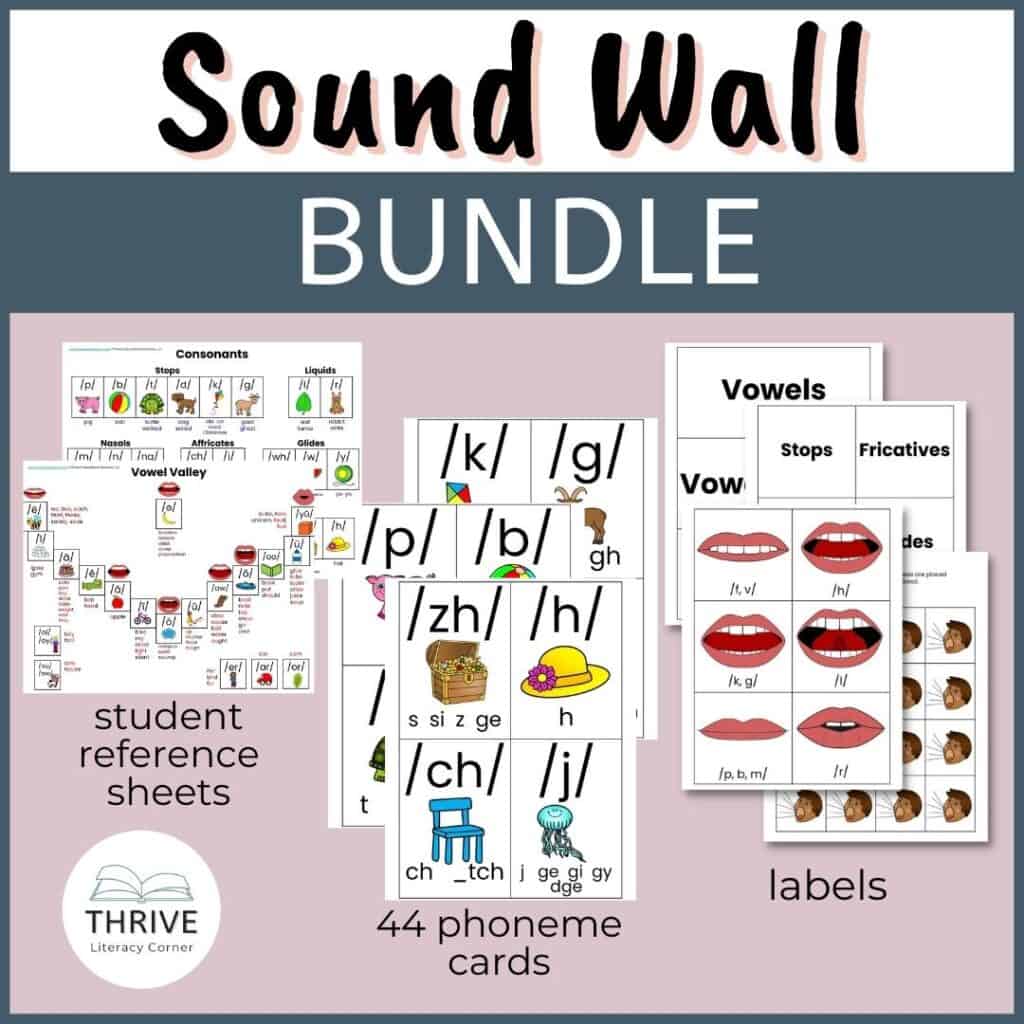
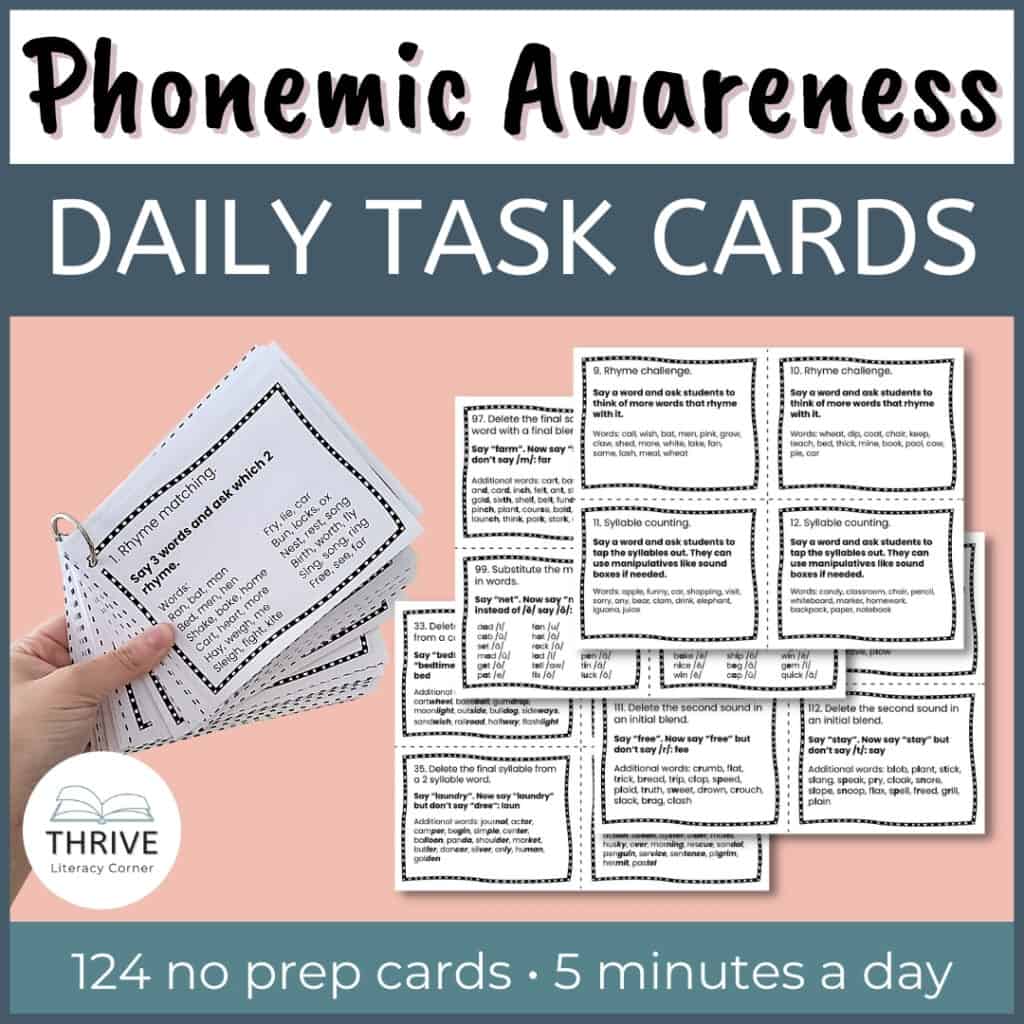
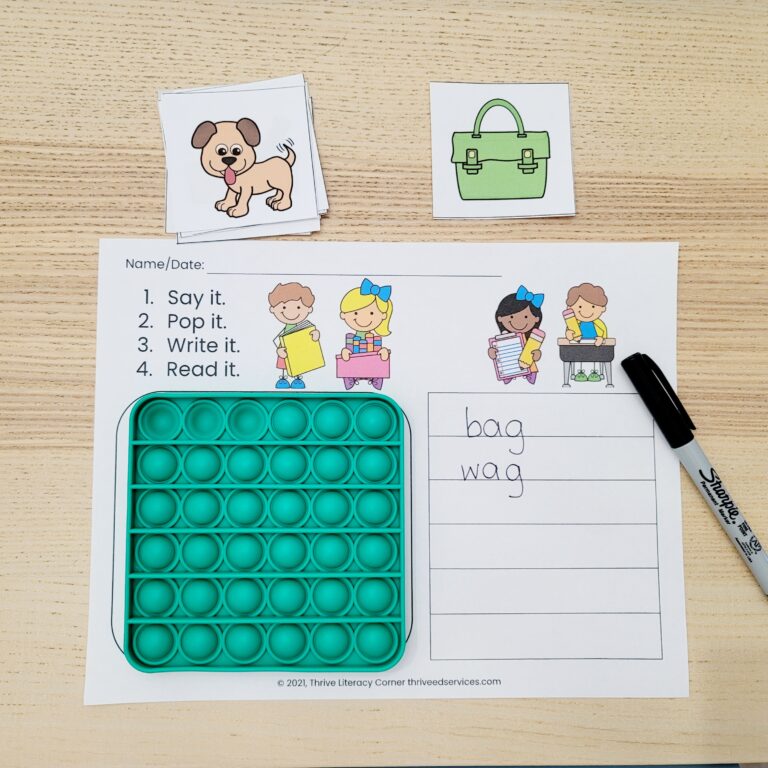
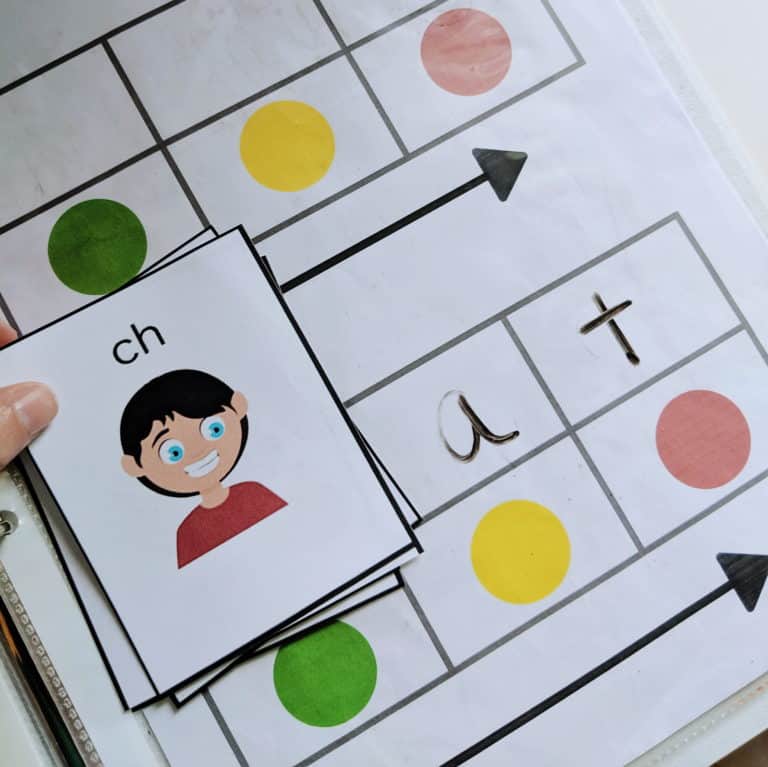
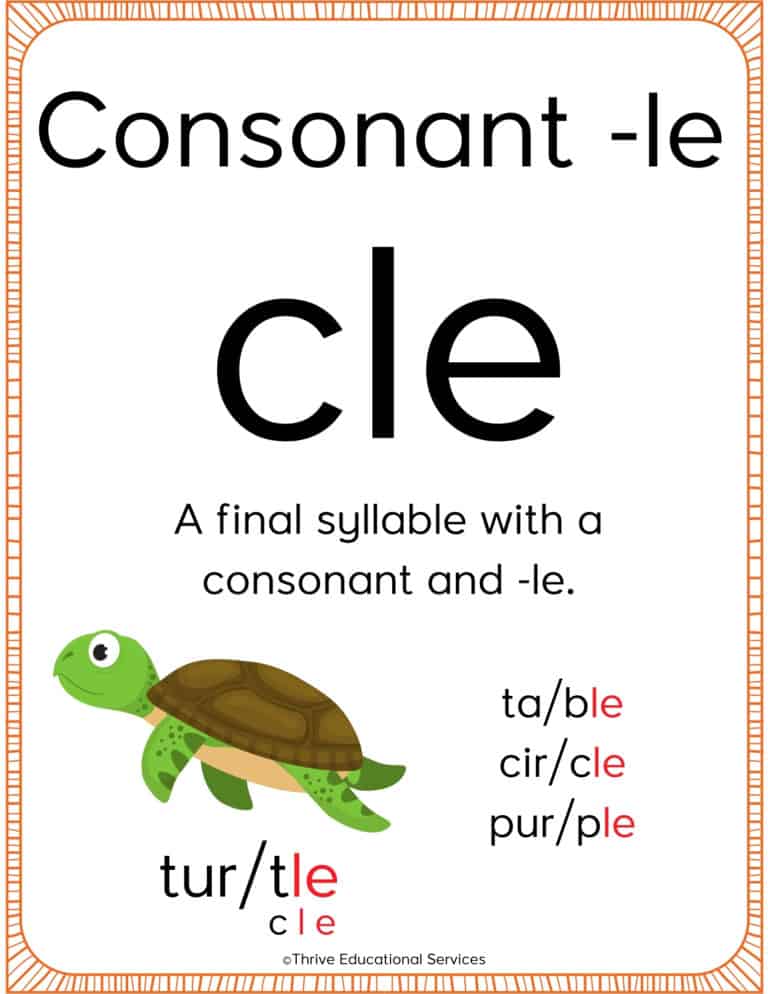

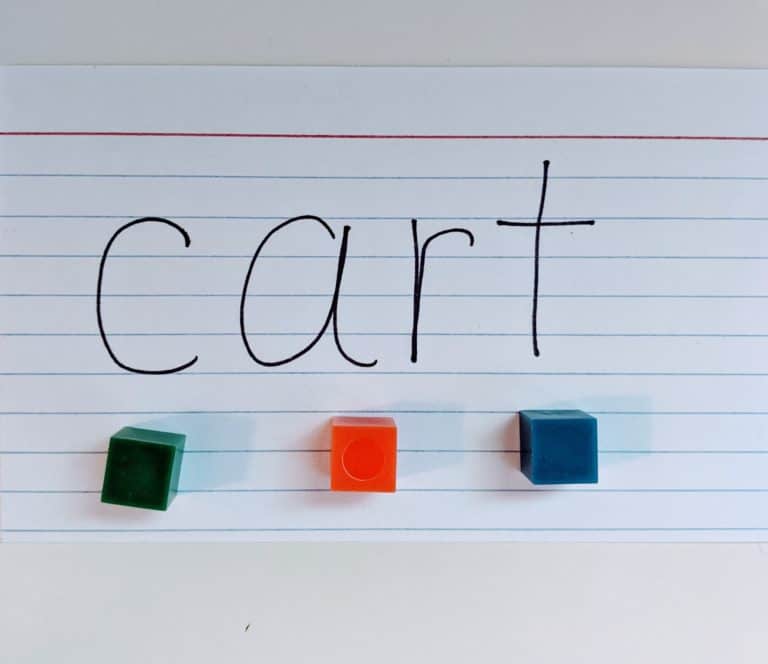

Thank you for this post. It is very helpful when thinking about how to specifically streamline my spelling instruction in my second grade classroom.
I have always used a word wall that posted high frequency words for students to reference when they were writing and expected them to spell those words correctly because “they were right there”. As I read more about SOR and how children learn words I think I’m understanding why this is not the best practice. I now have a sound wall with a separate section for “heart words”. The heart words are just kind of thrown up on the wall right now in no particular order and I fear that is quite confusing for struggling learners.
Do you have any advice about posting heart words? And, do you have any advice about giving students individual spelling books/folders etc to write words that they want to know how to spell when they’re writing?
Thank you!
Hi Kathleen. That is such a great question. If you’re teaching heart words to the class, I would just display the words you have taught. Since every student will struggle with different words, I would have each student keep a “heart words list” that they could reference. They could write in the words they want to have on their list.